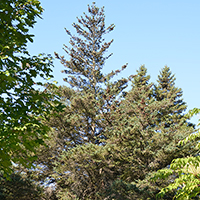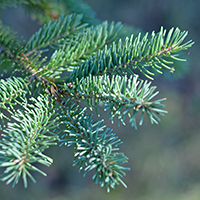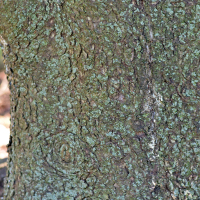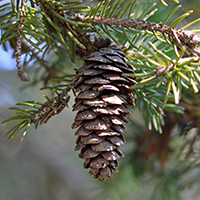What red spruce looks like
Size and shape
- Reaches 26 metres high.
- Trunk can be 60 centimetres in diameter.
Needles
- Four-sided needles attached to hairy twigs.
- Yellowish-green and curved.
Bark
- Flaky bark that can be grey, brown, or reddish in tone.
Cones
- Seeds are only produced after the tree reaches 30 to 40 years of age, with good seed crops occurring every 3 to 8 years.
- Mature cones can be 3 to 5 centimetres long with easily detached scales.
Where red spruce is found
Red spruce populations have declined over the past 50 years and are now relatively rare in Ontario. Red spruce can be found in small, isolated stands in the Algonquin Highlands of Eastern Ontario, with its natural range extending into the Maritime provinces.
What you need to know to grow red spruce
- Moisture: grows best in well-drained soils.
- Soil: grows well in soils with high stone content.
- Shade: shade tolerant, meaning it can grow in shade.
Benefits and uses of red spruce
Wildlife benefits
- Red spruce trees provide winter habitat for moose and deer, which require protection from deep snow during the winter.
- Squirrels and seed-eating birds enjoy red spruce seeds in the fall.
Commercial uses
The wood from red spruce trees is used for:
- string instruments
- construction lumber
- pulp
Red spruce trees are also used as Christmas trees.
Fun facts about red spruce
- Red spruce trees can live for 400 years.
- The sap can be used to make spruce gum.
Updated: November 22, 2023
Published: July 18, 2014



